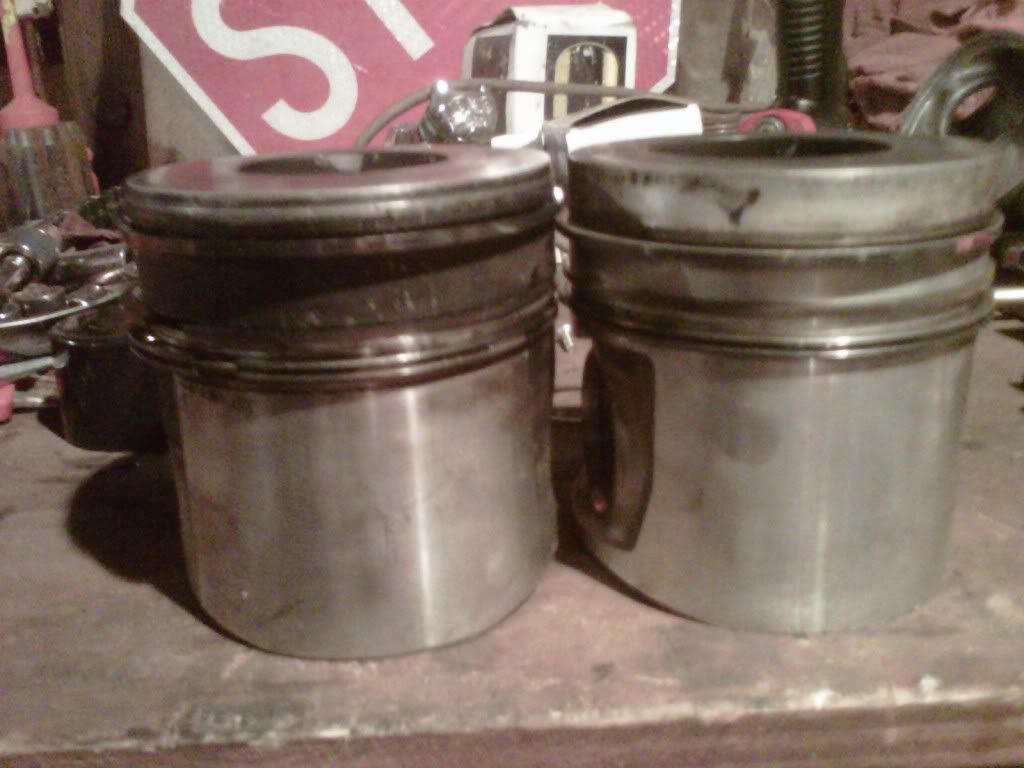Fahlin Racing
New member
- Joined
- May 9, 2012
- Messages
- 469
...In terms of design, I guess more critical is the magnitude of required heat displacement from the crown, which will be largely be dependent on material i.e. If its a forged alloy part, a higher heat transfer rate is experienced so a cooler crown often follows...
One would also think that the amount of material too has an effect on transfer path as well.
Charles Fayette Taylor states with aluminum trunk pistons first quote is apparently for small bore unsuprcharged engines...
For this type of cooling aluminum is desirable, with generous sections for heat conduction from the center of the piston head..... Heat conduction to the cylinder walls is promoted by small skirt clearances. Rings run cooler as the top "land" (distance from the top edge of the piston to top ring) is increased.
Now a few sentences later in the next paragraph about supercharged and diesel engine pistons about the oil speed in the gallery of the crown...
For oil cooled pistons the rate of oil circulation must be high enough to avoid breakdown of the oil into cabronaceous deposits
Food for thought. Though most think oil cooling galleries in pistons are there to keep the crown of the piston cooler, and they do to some extent, they are really there to protect the top most ring and land. If and when the oil does not fill the cavity, the gallery becomes a thermal break between the topmost part of the piston and the skirt causing a huge increase in temperature.
Going back to my thought, in this situation the piston mass position would provide a more efficient heat-mass-movement (even if it requires a good amount of energy to do it) in the way of least resistance? if the rings had more 'meat' around them the rings would seem to be running at a lower temperature, so they aren't or can't be scorched. If we proceed down to the skirt we have 2 areas that won't absorb heat quickly just because of material differences and not being integral, the rings which are already mentioned and the wrist pin which can be hollow or solid although solid is generally heavy duty commercial. Since we have good manufacturing compared to yesteryear, quality aluminum, forged or cast pistons could have the same efficiency of heat transfer.....
IMO so far, cooling a piston with a liquid seems to be a more efficient way of reducing and maintaining an adequate operating temp of a piston in addition to our conduction process.
I tried looking for piston weights for the 5.9L or any other light duty mill, didn't find much after a quick browse but came across this article from, again Diesel Power. Mahle mentioning, in some applications, the Monotherm can be around 100 grams lighter in weight. Maybe I did not use the precise words in my initial search. Good enough for starters on establishing piston weight discussion anyways.
http://www.dieselpowermag.com/tech/1204dp_mahle_unbreakable_pistons_piston_of_the_future/

